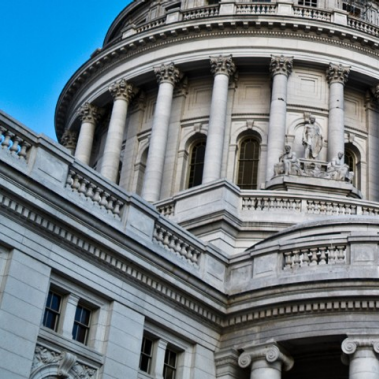This article was first published on April 23, 2020.
Authored by Douglas J. Elliott, Partner, Financial Services
In my last paper, "Top 5 Concerns About Policy In The New Era," I laid out five policy areas of particular concern to me as a result of the COVID-19 pandemic and the related economic and financial responses. In light of these, we need some new tools for economic policy makers if we want the recovery to be robust.
The solutions offered in this paper address the following issues:
- Too much debt in the economic system
- Misallocation of credit as we pump liquidity into the corporate sector
- The need for many firms to restructure their balance sheets
- Insufficient insurance against pandemic losses
1. TOO MUCH DEBT IN THE ECONOMIC SYSTEM
The corporate sector in many countries had already operated with high levels of debt, which the pandemic will exacerbate by adding further debt and reducing cash flows. Similarly, virtually all governments are adding substantially to their debt levels at the same time as their revenues decline. Some countries will find themselves over-burdened. Individuals and families will face similar difficulties in many cases.
It is unfortunate, but largely necessary, that a major element of the policy response to the pandemic has been to encourage more borrowing, often with government subsidies and guarantees. However, we should pivot from this policy as quickly as feasible to one that substitutes equity or equity-like instruments for some of this debt.
Governments could go further and directly subsidize investments in medium-sized firms or in favored sectors of the economy that will struggle to raise equity otherwise
POTENTIAL CORPORATE DEBT SOLUTIONS (CLICK HERE)
Allow market forces to operate.
Many countries do have effective financial markets that should eventually match up investors with companies that need more equity. Perhaps all we need is to give the markets time. However, there are good reasons to think market failures may currently exist. For small to medium size businesses (SMEs) and for larger corporates in some sectors, there may be too much “Knightian uncertainty,” meaning not just risk of bad outcomes, but an inability to even understand the shape of the risk structure.
Encourage those market forces.
This would be a good time to add incentives and remove barriers to equity raising. Tax policies currently often favor debt and could be altered. Policy makers could also act to improve the flow of information on companies or to ease requirements for sales of shares.
Nationalize companies or take significant government stakes.
In some countries, the response may be to have the government buy stakes, up to 100 percent in certain firms, especially in strategic industries or which employ many people. This does provide equity and gives taxpayers a potential return, but at the expense of larger investments than required by the other options and the introduction of greater state control of the economy. Ideological views, and past history, will heavily influence whether countries take this route. It should be noted, however, that even the United States has invested in troubled companies, such as airlines, despite strong ideological opposition. However, it was rare and took place under extreme circumstances, such as after 9/11.
Convert loans backed by the government into equity.
The government could offer to convert loans it directly made into equity in the firms. This would essentially just be another way of buying stakes, unless other features were added. Something similar could be done with government-guaranteed loans, but would be more complicated since the direct lenders would need to be involved as well.
Invest in funds that buy equity in favored sectors.
The government could agree to participate on equal terms with other investors in funds that are designed to buy equity in favored areas, such as SMEs or certain sectors of the economy. This would be principally designed to ensure there were sufficient total funds available for these sectors, in the face of liquidity issues or other factors that made investors more reluctant. It would not, of itself, provide incentives to invest in firms, or on terms, which the private sector investors did not find inherently attractive.
Subsidize equity investments in certain sectors.
Governments could go further and directly subsidize investments in medium-sized firms or in favored sectors of the economy that will struggle to raise equity otherwise. (I do not include small firms, as there are too many inherent obstacles, including very large transaction and monitoring costs relative to their size.) For example, the government could agree to pay a dividend of “X percent” a year on the original investment, for some period of time. It might or might not make sense to require a minimum holding period for the initial investor.
A further variation would be to give the government warrants with a high strike price so that taxpayers share in the upside if companies do very well. Another option would be to simply have the government buy such warrants up front. The price of any warrants the government buys would need to be substantially above what private sector investors would pay, otherwise there would be no economic subsidy to encourage investment by others.
The big advantage of subsidies over direct government purchases of equity is that it puts the pricing and business decisions in the hands of the private sector, which has greater expertise. In fact, the government might wish to have minimum requirements for the investors, to ensure that they are likely to bring true expertise to bear.
Protect against macroeconomic tail risks.
Currently, investors face high levels of uncertainty that could deter equity investment in sectors that are particularly vulnerable or in medium-sized firms that are less known. The government could provide cheap insurance against a drop in GDP of more than “X percent” for “Y quarters” or against other macroeconomic scenarios of particular concern. This could prove costly for taxpayers in extreme cases, so it would be particularly important to keep this offer focused on new investment in the targeted firms. Further, governments would almost certainly have provided substantial levels of additional support to the economy in those extreme cases. Why not get some offset through insurance premiums in advance while providing clarity to both sides about what the payments would be? Admittedly, other parts of the future crisis response would remain unknown, but the total level of uncertainty would be reduced.
Write down debt.
Restructurings are another way of rebalancing debt to equity, and are discussed later.
2. MISALLOCATION OF CREDIT AS WE PUMP LIQUIDITY INTO THE CORPORATE SECTOR
Not only are we probably introducing too much debt into the economic system, but there is a high likelihood that we are pushing some of the debt onto firms that either cannot make the best use of it or have become “zombie” companies. The problem with zombie firms is that they tie up valuable resources, such as credit, without producing corresponding economic value. Further, troubled firms like these are likely to go bust at some point, with bigger losses. Japan’s “lost decade,” which extended well over 10 years, was produced in part by the unwillingness to clean up its corporate sector.
The design of current government credit programs, combined with laws and political pressure for banks to lend to all who need it, eliminate or crimp normal credit underwriting and pricing procedures. This may be the right answer in the heat of the crisis, with a strong emphasis on holding down unemployment while the economy stabilizes. However, it would be best to move away from this undifferentiated approach as soon as feasible.
There is little that can be done with most of the new programs that are in place, other than to encourage movement to new programs, where possible. For example, refinancing alternatives could be created for these lending programs on a sounder long-term basis.
But the guidance given to banks, and the terms of any new government programs, can be designed to reduce the problems of indiscriminate lending. My 2011 book on government credit programs, Uncle Sam in Pinstripes: Evaluating US Federal Credit Programs, contains much more detail on good design.
OPTIONS FOR NEW GOVERNMENT CREDIT PROGRAMS (CLICK HERE)
Lower the guarantee percentage.
Ultra-high government credit guarantees, such as 95 percent or 100 percent, were sometimes necessary to ensure extremely fast credit availability as COVID-19 crushed the economy. However, they strongly reduce the incentive to use traditional credit underwriting procedures. Depending on the sector, substantially lower guarantee levels may still produce the desired medium-term response.
Switch to a government guarantee against extreme negative outcomes on a portfolio of loans.
The government could switch from guaranteeing a fixed percentage of certain types of loans and instead take on all or most of the risk of extreme bad results, giving banks and investors sufficient comfort to lend on more favorable terms. This could harness the private sector’s ability to underwrite and price credit while still providing a strong incentive to make loans that would otherwise appear too risky or unattractive. This approach would work best with a large portfolio of loans, in order to gain the benefits of diversification.
Combine individual firm loan guarantees with portfolio protection against extreme outcomes.
There is no reason that the government could not combine the two previous options.
Encourage a wider range of credit spreads, to allow pricing to be more risk-sensitive.
As explained further in my book, having a single price for all loans, or too narrow an allowed range of pricing, produces moral hazard and other problems that can prove very expensive for taxpayers over time.
Introduce or expand minimum credit underwriting standards.
With the luxury of somewhat more time, new programs could contain tougher minimum underwriting standards, even if these minima were still well below what would be used in normal times. As with other of these points, it is about balancing the need to support credit provision with the desire to avoid lending to firms that will not be able to repay. A variation would be for the government to reduce credit spreads still further, in return for stronger underwriting.
3. THE NEED FOR MANY FIRMS TO RESTRUCTURE THEIR BALANCE SHEETS
The combination of the economic damage from COVID-19 and the addition of large amounts of debt due to government programs will inevitably result in a surge of bankruptcies or other forms of restructuring. The US bankruptcy system is well designed for companies that hit severe, non-structural problems, but most nations have much more punitive approaches that destroy substantial value in these circumstances. Even in the US, bankruptcy courts likely will not be able to handle the surge in volume in an effective manner.
POTENTIAL RESTRUCTURING SOLUTIONS (CLICK HERE)
Encourage fast, voluntary restructuring programs in countries where bankruptcy laws are problematic or the bankruptcy system will be overwhelmed.
There have always been voluntary restructuring agreements between debtors and their creditors in some of the cases where an involuntary restructuring would destroy more value. Where possible, it would be advantageous to standardize and streamline such agreements. Governments may need to provide some subsidy or cheap funding for qualifying restructurings in order to encourage sufficient, swift action in this area.
Create a government or central bank fund to buy bad assets or to provide partial guarantees on portfolios of bad assets.
If the scale of restructuring in the economy is too great, it may be desirable for the government to step in with its own resources. This is a complicated matter and there are favorable and unfavorable historical precedents. For example, the US set up the Resolution Trust Company (RTC) during the savings and loan crisis to take on bad assets from failed institutions. The RTC is generally viewed as having done a good job, significantly reducing the “fire sale” losses that would have otherwise occurred, both for the taxpayers directly and for the economy as a whole. I am less familiar with the Treuhandanstalt in Germany, which took over East German state businesses at the time of German reunification. My impression is that views are more mixed, although it is difficult to judge what would have happened with other alternatives.
Encourage “bad bank” structures when non-performing loans (NPLs) rise too high.
If the economy does badly enough, large volumes of NPLs will end up on the balance sheets of the banks. It may be desirable to set up industry-wide bad banks. Alternatively, there may be ways to streamline and speed up the ability of individual banks to create their own bad banks. Bad banks do not magically transform bad assets to good ones, but historical experience is that having a separate, clearly distinct unit handle bad assets has benefits both in reducing losses from bad assets and in improving the performance of the remaining businesses by allowing the “good bank” to focus on the future.
4. INSUFFICIENT INSURANCE AGAINST PANDEMIC LOSSES
In theory, businesses could have insurance against pandemics as part of their standard policies. In practice, relatively little is covered, due to exclusions in most policies. It is difficult for insurers to provide adequate protection, since their potential losses could be so high and they would hit most insurance policies simultaneously. Hurricanes and earthquakes can be devastating, but insurers can offset losses in one geography with profits in places that are not hit. Pandemics, by definition, hit almost everywhere at once.
The biggest pandemic insurance gap for companies, at least this time around, is in business interruption insurance. In the absence of insurance, governments are stepping in on an ad hoc basis to subsidize and fund some of the firms that have been hardest hit by the lockdowns.
Our sister company, Marsh, is exploring options in this area. I will not pretend to know nearly as much as they do, but the idea seems very sound to me and shares characteristics with some of the US federal government’s insurance and reinsurance programs that I studied at the Center On Federal Financial Institutions when I ran that think tank.
POTENTIAL INSURANCE SOLUTIONS
Create a government insurance program for pandemic business interruption insurance.
Governments could create insurers that would provide this coverage. The pricing could be significantly below what the private sector would have to charge, for at least two reasons. First, governments are in the best position to diversify very large losses over entire countries and over a period of years. Second, the existence of such insurance would substantially reduce the government’s need to create emergency programs on an ad hoc basis to pay when the pandemic does hit.
Reinsure private sector pandemic business interruption insurance.
It may be more effective to have private sector insurers offer this insurance, with the government providing reinsurance to protect the insurers against losses exceeding a certain level. This would allow better integration of pandemic business-interruption (BI) insurance with other corporate insurance and would allow the government to use the existing insurance infrastructure.
Douglas Elliott is an Oliver Wyman partner focused on the intersection of Finance and public policy. He is the author of the book, Uncle Sam in Pinstripes: Evaluating US Federal Credit Programs. Prior to his current position, he was a scholar at the Brookings Institution and a Visiting Scholar at the IMF. Before that, he was the founder and principal researcher for the Center On Federal Financial Institutions. He began his career with two decades as an investment banker, primarily at JP Morgan.






